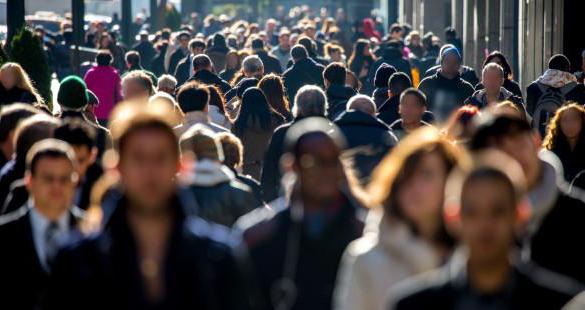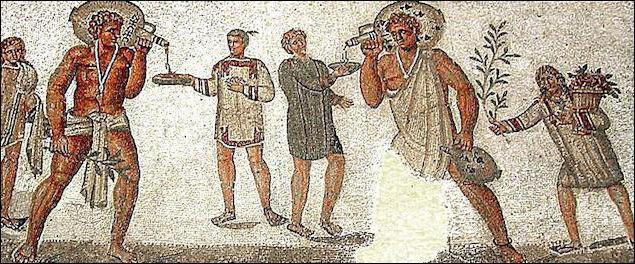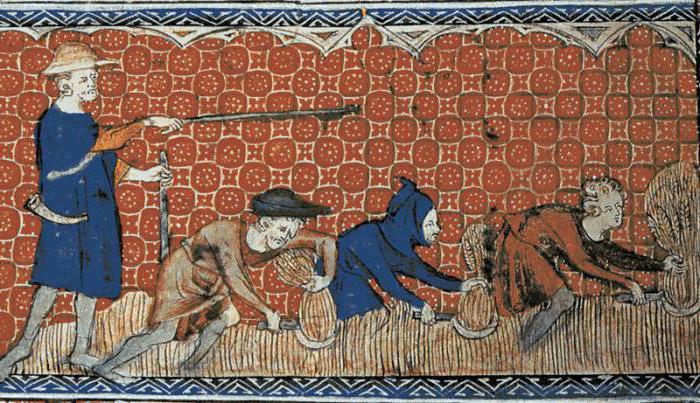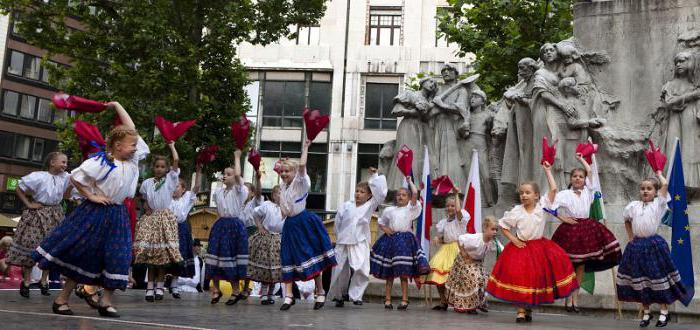With the advent of people, their unification into tribes and clans began, from which nations and societies formed thousands of years later. They began to populate and develop the planet, leading first a nomadic way of life, and then, seeding in the most favorable places, they organized a social space. Further filling it with objects of labor and human activity was the beginning of the emergence of city-policies and states.
Over the course of tens of thousands of years, social society has been formed and developed in order to acquire the features that it has today.
Definition of social structure
Each society goes its own way of development and the formation of the foundations of which it consists. To understand what a social structure is, it should be taken into account that this is a complex interconnection of the elements and systems functioning in it. They make up a kind of skeleton on which society stands, but at the same time it tends to change, depending on the conditions.
The concept of social structure includes:
- the elements that fill it, that is, various types of communities;
- social ties affecting all stages of its development.
The social structure consists of a society divided into groups, layers, classes, as well as ethnic, professional, territorial and other elements. Moreover, it is a reflection of the relationship between all its members based on cultural, economic, demographic and other types of ties.

It is people, creating not arbitrary but constant relationships with each other, that form the concept of social structure as an object with established relationships. Thus, a person is not completely free to choose, being part of this structure. It is limited by the social world and the relations that have developed in it, into which it enters constantly in various fields of its activity.
The social structure of society is its framework, within which there are various groups that unite people and put forward some requirements for their behavior in the system of role relations between them. They may have some framework that cannot be violated. For example, a person working in a team where they did not impose strict requirements on the appearance of employees, having got to another job, where they are, will perform them, even if he does not like it.
Distinctive features of the social structure are the presence of real entities that create certain processes in it. They can be both individual individuals, and various segments of the population and social communities, regardless of their size, for example, the working class, religious sect or intelligentsia.
Society structure
Each country has its own social system with its traditions, norms of behavior, economic and cultural ties. Any such society has a complex structure based on the relationship of its members and the relationships between castes, classes, layers and strata.
It is made up of large and small social groups, which are commonly called associations of people united by common interests, work or the same values. Large communities are distinguished by the size of income and the methods of its receipt, by social status, education, occupation or other characteristics.Some scholars call them “strata,” but the terms “layer” and “class” are more common, such as workers, who make up the largest group in most countries. 
Society at all times had a clear hierarchical structure. For example, 200 years ago estates existed in some countries. Each of them has its own privileges, property and social rights which were enshrined in law.
The hierarchical division in such a society operates vertically, passing through all the available types of connections - politics, economics, culture, and professional activity. As it develops, groups and estates change in it, as well as the internal relationship of their members. For example, in medieval England, an impoverished lord was more respected than a very wealthy merchant or merchant. Today, in this country, ancient noble families are honored, but more admired by successful and wealthy businessmen, athletes or people of art.
Flexible community system
A society in which there is no caste system is mobile, as its members can move from one layer to another both horizontally and vertically. In the first case, a person’s social status does not change, for example, he simply moves from one position to a similar one in another job.
Moving vertically means raising or lowering social or financial status. For example, a person with an average income takes a leading position, giving incomes far exceeding the previous ones.

In some modern societies, there is social inequality based on financial, racial or social differences. In such structures, some layers or groups have greater privileges and opportunities than others. By the way, some scholars believe that inequality is a natural process for modern society, as a large number of people gradually emerge in it, distinguished by outstanding abilities, talents and leadership qualities, which become its basis.
Types of social structures of the ancient world
The formation of society throughout the history of the development of mankind directly depended on the division of labor, the level of development of people and socio-economic relations between them.
For example, during the primitive communal system, the social structure of society was determined by how useful the representatives of a tribe or clan were to the rest of its members. Patients, the elderly and the crippled were not kept if they could not make at least some feasible contribution to the welfare and safety of the community.
Another thing is the slave system. Although it was divided into only 2 classes - slaves and their masters, the society itself was composed of scientists, traders, artisans, the army, artists, philosophers, poets, peasants, priests, teachers and representatives of other professions.

On the example of Ancient Greece, Rome and a number of East countries, one can trace how the social society of that time was formed. They had well-developed economic and cultural ties with other countries, and the strata of the population were clearly divided into representatives of various professions, into free and slaves, to those in power and legalists.
Types of social structures from the Middle Ages to the present day
What is the social structure of feudal society can be understood by following the development of European countries of that period. It consisted of 2 classes - feudal lords and their serfs, although society was also divided into several classes and representatives of the intelligentsia.
Estates are social groups that occupy their position in the system of economic, legal and traditional relations. For example, in France there were 3 classes - secular (feudal lords, nobles), clergy and the largest part of society, which included free peasants, artisans, merchants and merchants, and later the bourgeoisie and the proletariat.

The capitalist system, especially the modern one, has a more complex structure. For example, the concept of the middle class arose, which used to include the bourgeoisie, and today these are traders, entrepreneurs, highly paid employees and workers, farmers, and small businesses. Belonging to the middle class is determined by the income level of its members.
Although this category includes a large part of the population in the highly developed capitalist countries, representatives of large business have the greatest influence on the development of the economy and politics. Separately, there is the class of the intelligentsia, especially the creative, scientific, technical and humanitarian. So, many artists, writers and representatives of other intellectual and creative professions have incomes characteristic of large business.
Another type of social structure is the socialist system, which should be based on equal rights and opportunities for all members of society. But the attempt to build developed socialism in Eastern, Central Europe and Asia led many of these countries to poverty.
A positive example is the social system in countries such as Sweden, Switzerland, the Netherlands, and others, which are based on capitalist relations with full social protection of the rights of its members.
The constituent parts of the social structure
To understand what a social structure is, you need to know what elements are included in its structure:
- Groups bringing together people related by a commonality of interests, values, professional activities or goals. More often they are perceived by others as communities.
- Classes are large social groups that have their own financial, economic or cultural values, based on their own code of honor, the manner of behavior and interaction of their representatives.
- Social strata are intermediate and constantly changing, emerging or disappearing social groups that do not have an explicit connection with the means of production.
- Strata are social groups that are limited by some parameter, for example, profession, status, income level or other grounds.

These elements of the social structure determine the composition of society. The more of them, the more complicated its design, the more clearly the hierarchical vertical is traced. The division of society into various elements is noticeable in relation to people to each other, depending on the criteria inherent in their class. For example, the poor do not like the rich because of their financial superiority, while the latter despise them for their inability to make money.
Population
A system of various types of communities that have strong internal ties between their members is what the social structure of the population is. There are no strict criteria dividing people in them. It can be both basic and non-basic classes, layers, layers within them and social groups.
For example, before the advent of Soviet power in Ukraine, most of its population were artisans and individual peasants. A third were landowners, prosperous peasants, traders and workers, while there were extremely few employees. After collectivization, the country's population already consisted of only three layers - workers, employees and peasants.
If we consider the historical stages of the development of countries, the absence of the middle class, namely entrepreneurs, small business representatives, free artisans and wealthy farmers, led them to impoverishment and a sharp economic contrast between the layers of society.
The formation of the "middle peasants" contributes to the rise of the economy, the emergence of a whole class of people with a completely different mentality, goals, interests and culture. Thanks to them, the poorer layer receives new types of goods and services, jobs and higher salaries.
Today, in most countries, the population consists of the political elite, clergy, technical, creative and humanitarian intelligentsia, workers, scientists, farmers, entrepreneurs and representatives of other professions.
Concept of social system
If for the sages who lived 2500 years ago, this term meant the ordering of life in the state, today the social system is a complex entity, which includes the primary subsystems of society, for example, economic, cultural, spiritual, political and social.
- The economic subsystem implies the regulation of human relations in solving issues such as the production, distribution, use or exchange of material goods. It should solve 3 problems: what to produce, how and for whom. If one of the tasks is not fulfilled, then the entire economy of the country collapses. Since the environment and needs of the population are constantly changing, the economic system must adapt to them in order to satisfy the material interests of the whole society. Higher standards of living, the more needs he has, which means that the economy of a given society functions better.
- The political subsystem is associated with the organization, establishment, work and change of power. Its main element is the social structure of the state, namely its legal institutions, for example, courts, prosecutors, electoral bodies, arbitration and others. The main function of the political subsystem is to ensure social order and stability in the country, as well as a quick solution to the vital problems of society.
- The social (social) subsystem is responsible for the prosperity and well-being of the population as a whole, regulating the relationships between its various classes and layers. This includes health care, public transportation, utilities and amenities.
- The cultural and spiritual subsystem is engaged in the creation, development, dissemination and preservation of cultural, traditional and moral values. Its elements include science, art, education, education, morality and literature. Her main responsibilities are raising young people, transferring the spiritual values of the people to a new generation, enriching the cultural life of people.

Thus, the social system is a fundamental part of any society, which is responsible for the uniform development, prosperity and security of its members.
Social structure and its levels
Each country has its own territorial divisions, but in most of them they are approximately the same. In modern society, the levels of social structure are divided into 5 zones:
- State. She is responsible for making decisions regarding the country as a whole, its development, security and international situation.
- Regional social space. It applies to each region individually, taking into account its climatic, economic and cultural characteristics. It may be independent, or may depend on a higher state zone in matters of subsidies or budget redistribution.
- The territorial zone is a small subject of the regional space, which has the right to elections to local councils, to form and use its own budget, to solve issues and tasks at the local level.
- Corporate zone. It is possible only in a market economy and is represented by farms that conduct their labor activities with the formation of the budget and local government, for example shareholders. It is subject to territorial or regional zones according to laws formed at the state level.
- Individual level. Although it is located at the bottom of the pyramid, it is its foundation, since it implies the personal interests of a person, which are always above the public. The needs of an individual can have a wide range of desires - from a guaranteed decent salary to self-expression.
Thus, the formation of a social structure is always based on the elements and levels of its components.
Changes in the structure of society
Each time countries moved to a new level of development, their structure changed. For example, a change in the social structure of society during serfdom was associated with the development of industry and the growth of cities. Many serfs went to work in factories, passing into the class of workers.
Today, such changes relate to pay and labor productivity. If 100 years ago physical labor was paid higher than mental, today it is the other way around. For example, a programmer can get more than a highly skilled worker.
